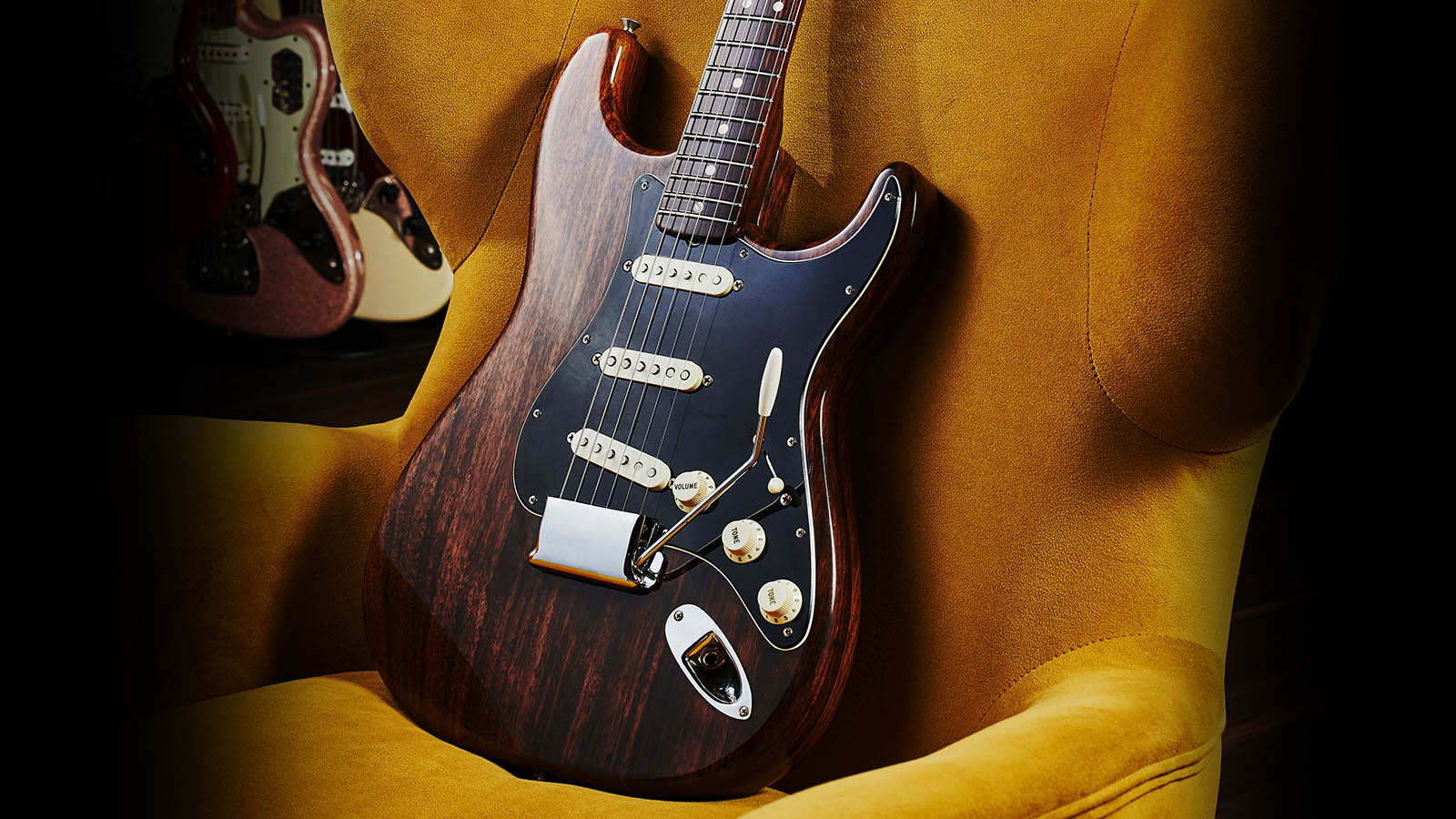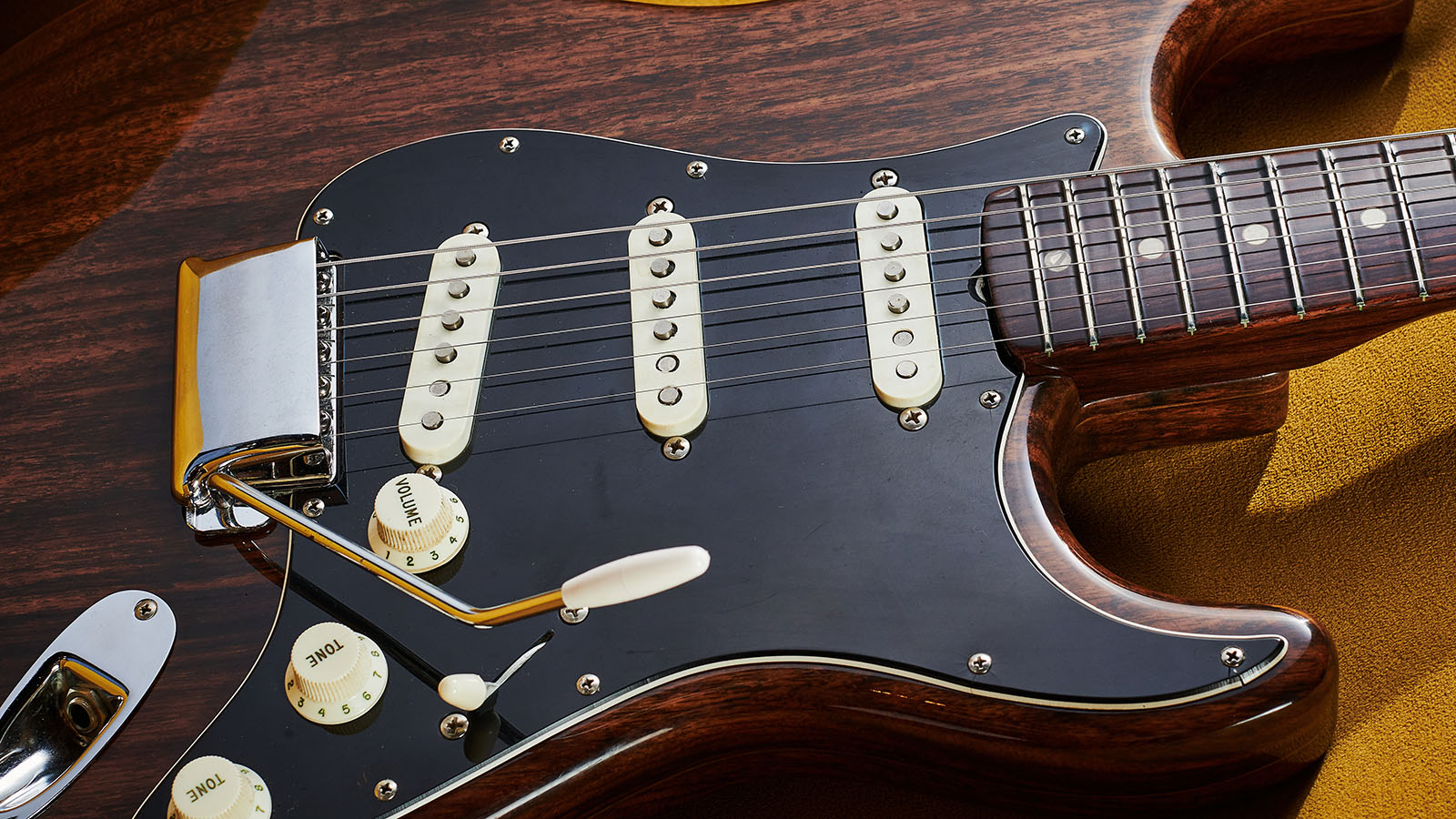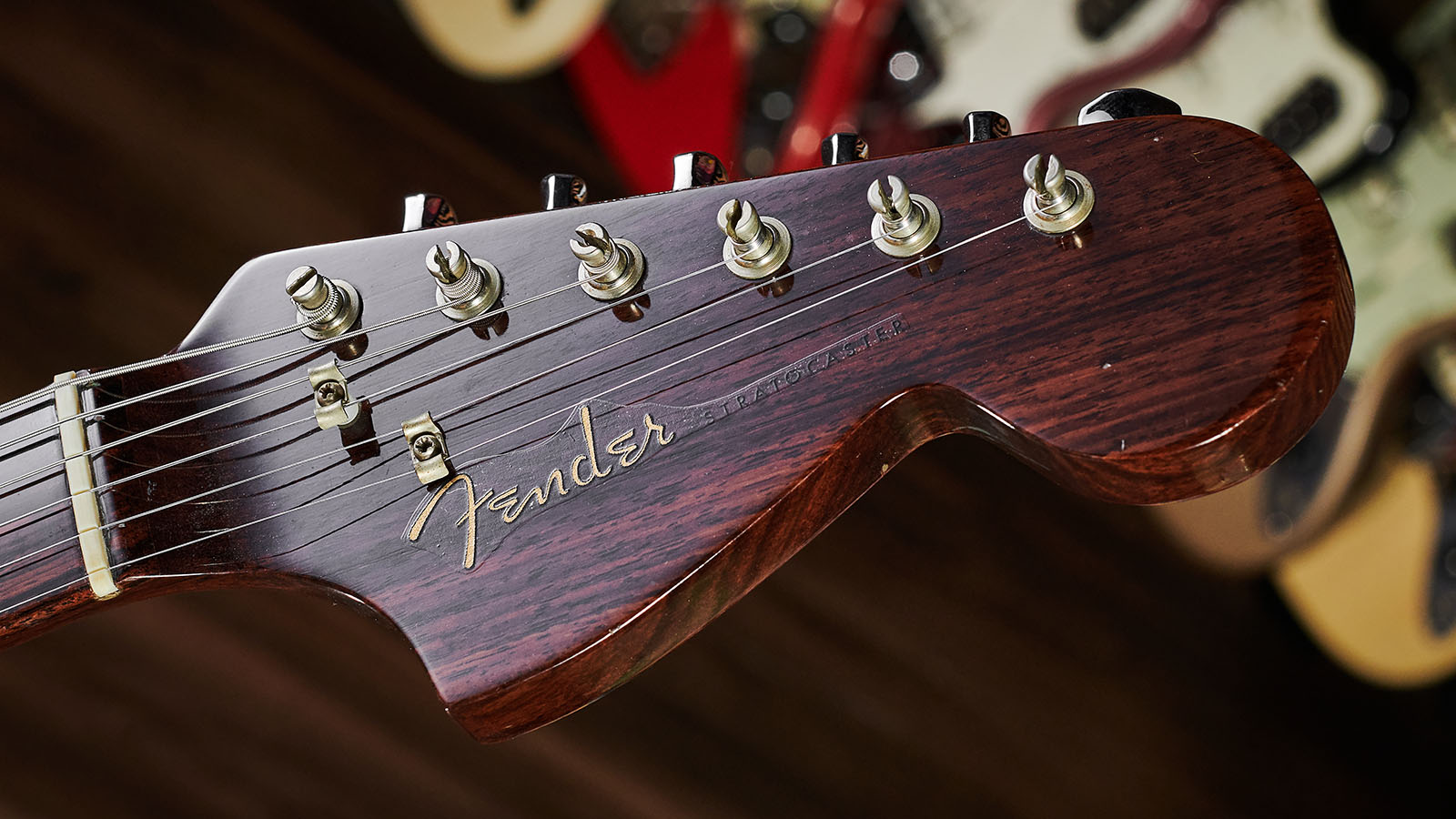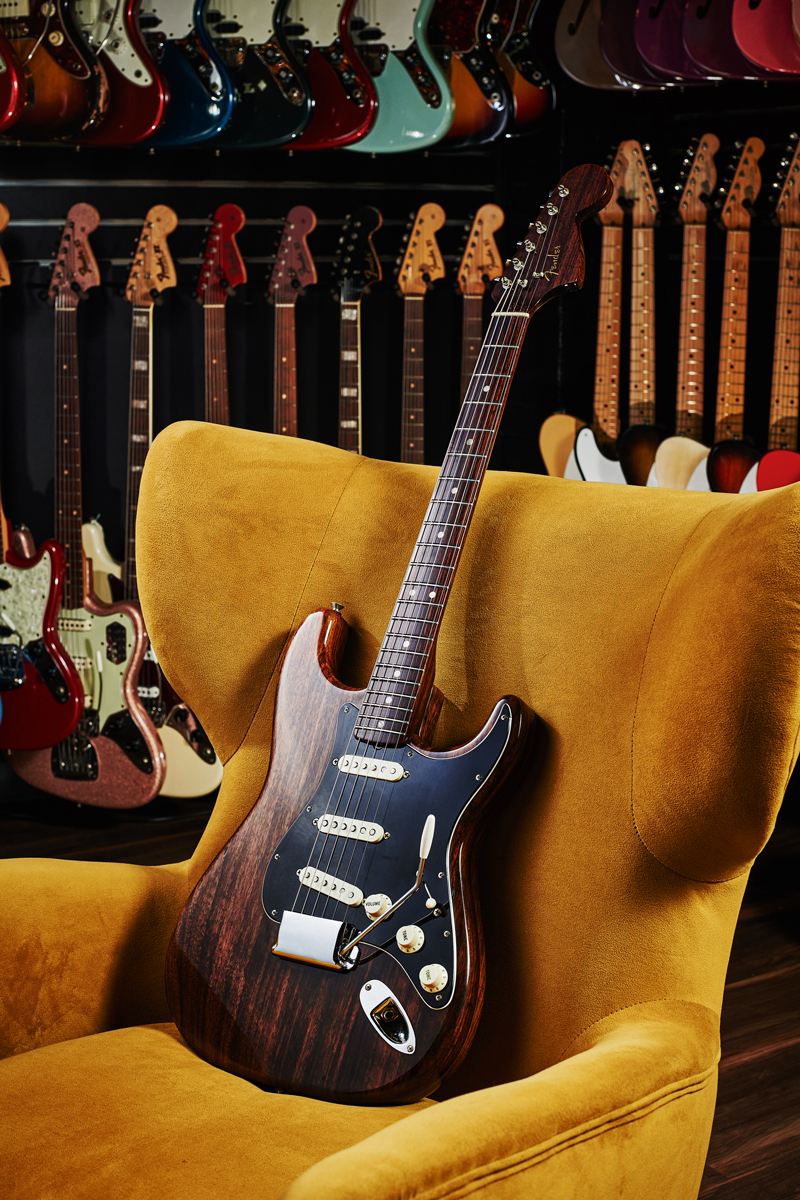The story of the Fender Rosewood Stratocaster that never made it to Jimi Hendrix
The fabled Stratocaster was the rosewood counterpart to the Telecaster popularized by George Harrison – and only two were ever made

As the ’60s became ever-more wild and psychedelic, Fender decided to see if prototype instruments in special finishes could help them tap into a market that had gone from all-American surf groups who thought custom colours were pretty far-out to LSD-taking hippies exploring the outer limits of the human psyche.
An easier way to tap into pop-culture movements was to make guitars for famous artists, of course – and, as the 1970s approached, none were more famous than George Harrison of The Beatles and Jimi Hendrix. Most people know that Fender made a rosewood Telecaster for Harrison, but fewer people know that two rosewood Strats were also made, one of which was intended for Jimi Hendrix.
New York’s Well Strung Guitars has one of those elusive Strats and it’s likely the one made for Hendrix – though the story has some nuances, explains owner David Davidson.
“That guitar has a very long history and to get it all down might be difficult, but I’ll tell you what I know,” he says. “When I was new to the guitar business, I was very fortunate to meet a guy – Philip Kubicki – who had a company that was making really expensive boutique basses. And Phil had formerly worked with Roger Rossmeisl over at Fender in their Special Projects workshop.
“Philip was charged with making a rosewood Telecaster to be presented to George Harrison, and he was also tasked with the job of making a rosewood Stratocaster for Jimi Hendrix.
“In fact, Philip was charged with making two Rosewood Stratocasters,” David continues. “One is going to be just a prototype for Fender to keep [as a proof of concept] same as with Harrison’s Telecaster, and the other one is going to be gifted to Jimi who’s going to come out to Fender and pick it up the next time he swings to the West Coast – except he passes away before it’s made.”

One of the reasons Hendrix never got his hands on it, David adds, was that the rosewood used in its construction was unusually difficult to work with.
All the latest guitar news, interviews, lessons, reviews, deals and more, direct to your inbox!
“The interesting thing is that both Harrison’s guitar and Hendrix’s guitar were 1968 production, but they had problems with the Stratocaster because the rosewood they used emitted a tremendous amount of oil.
“Philip told me that they had to wipe it with alcohol and steam it and get the oil to flow and then wipe it again, and this procedure took months to complete on the Strat. So even though it started its production in ’68, it really wasn’t ready until 1970. By that point, in September of 1970, Hendrix had already passed and he never got the guitar,” David says.
We know they made two rosewood Strats – and we know that the other one is in the wind: no-one’s seen it, no-one knows anything about it
“So here comes the controversial part,” he adds. “We know they made two rosewood Strats – and we know that the other one is in the wind: no-one’s seen it, no-one knows anything about it, Philip had no idea [what happened to it] and now he’s passed on, too. But while he was alive, Philip wrote more than one explanation of the guitar that survives, which we have here.
“This guitar had to have a special clearcoat formula – no other clear was bonding, it was just falling off the guitar – and that formula is written in the neck pocket. So there’s one magazine article where Philip claims the Hendrix guitar had nothing written in the neck pocket, but he contradicts himself [in a different article] where he says that the Hendrix guitar had the clearcoat formula written in the neck pocket.”

David shrugs and leans back in his chair. Supporting evidence, including documents from Fender and a car museum that formerly exhibited the Strat, suggest it is probably the one intended for Hendrix. But long experience has taught David that, with vintage guitars, some questions can never be completely resolved unless further evidence comes to light.
But that’s part of what makes vintage guitars so fascinating – like people, they all have secrets they may never give up. Some of these lost details don’t matter, while others remain among the big unanswered questions of guitar history.

Jamie Dickson is Editor-in-Chief of Guitarist magazine, Britain's best-selling and longest-running monthly for guitar players. He started his career at the Daily Telegraph in London, where his first assignment was interviewing blue-eyed soul legend Robert Palmer, going on to become a full-time author on music, writing for benchmark references such as 1001 Albums You Must Hear Before You Die and Dorling Kindersley's How To Play Guitar Step By Step. He joined Guitarist in 2011 and since then it has been his privilege to interview everyone from B.B. King to St. Vincent for Guitarist's readers, while sharing insights into scores of historic guitars, from Rory Gallagher's '61 Strat to the first Martin D-28 ever made.

